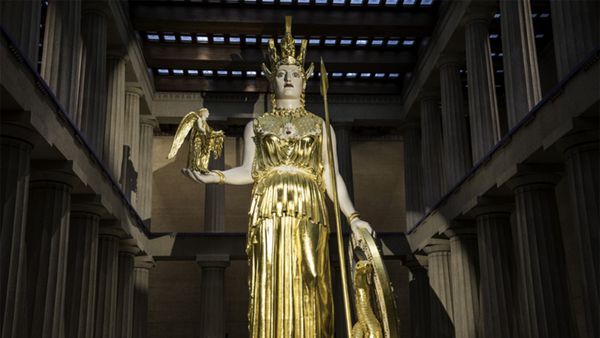
When you think of Hercules, traits like strength, bravery and virility (rumor has it he fathered more than 50 children by the time he was 19) might come to mind. What you may have missed in the popular, Disney-fied version of Hercules (the Roman version of the Greek hero Herakles) is the tale of his 12 labors, a series of seemingly impossible feats which he had to perform as repentance for murdering his family. Let's unpack that.
Hercules was born a demigod — the son of Zeus, the king of all gods, and the mortal princess, Alcmene. While that may sound like an idyllic domestic unit, Zeus was actually married to someone else: Hera, the goddess of women. Hera wasn't super thrilled with her husband's infidelity, and since Hercules reminded her of Zeus' indiscretions, she did everything she could to eliminate the freakishly strong half-god (in the world of superhuman beings, this included sending snakes into his crib).
Advertisement
"Zeus one time had declared that whichever son of his was going to be born on that day would rule over everything," says Richard P. Martin, Antony and Isabelle Raubitschek professor in Classics at Stanford University. "Hera, who was jealous and angered by her husband's extramarital flings, trickily delayed the birth of Heracles, his son-to-be by the mortal woman Alcmene, so that Eurystheus' mother would give birth first. Hercules came second — the next day — and lost out. Even after his birth and youth, Herakles was always hounded by Hera. It's a surprise then that his name means 'Glory of Hera' — but then again, without her constant prodding and threats, he would not have achieved his own glory."
None of Hera's attempts to off Hercules worked out, so, playing the long game, she waited until he was happily married with kids and then used her powers to make him murder his loved ones in a fit of madness. When he came to his senses, he was so overcome with grief that he asked Apollo, the god of healing, for some guidance. Apollo told Hercules he could make up for his horrendous crimes, but he'd have to do it by serving his cousin, Eurystheus, king of Tiryns. In one last-ditch effort to destroy Hercules, Hera suggested to Eurystheus that he force the demigod to complete 12 unfeasible labors.
"Several of his labors involve trips to the far reaches of the known world, including at least two to the Far West," Martin says. "Because he was thought to have gone farther than any mortal in that direction, the rocky promontories at the straits of Gibraltar (where the Mediterranean meets the Atlantic Ocean) were called the Pillars of Heracles — that's how far he traveled."
Here are those 12 labors and how they went:
Advertisement

